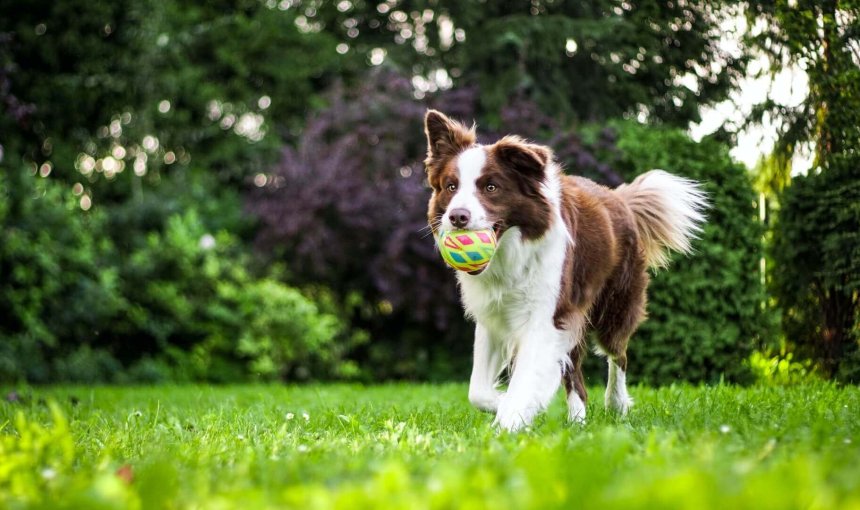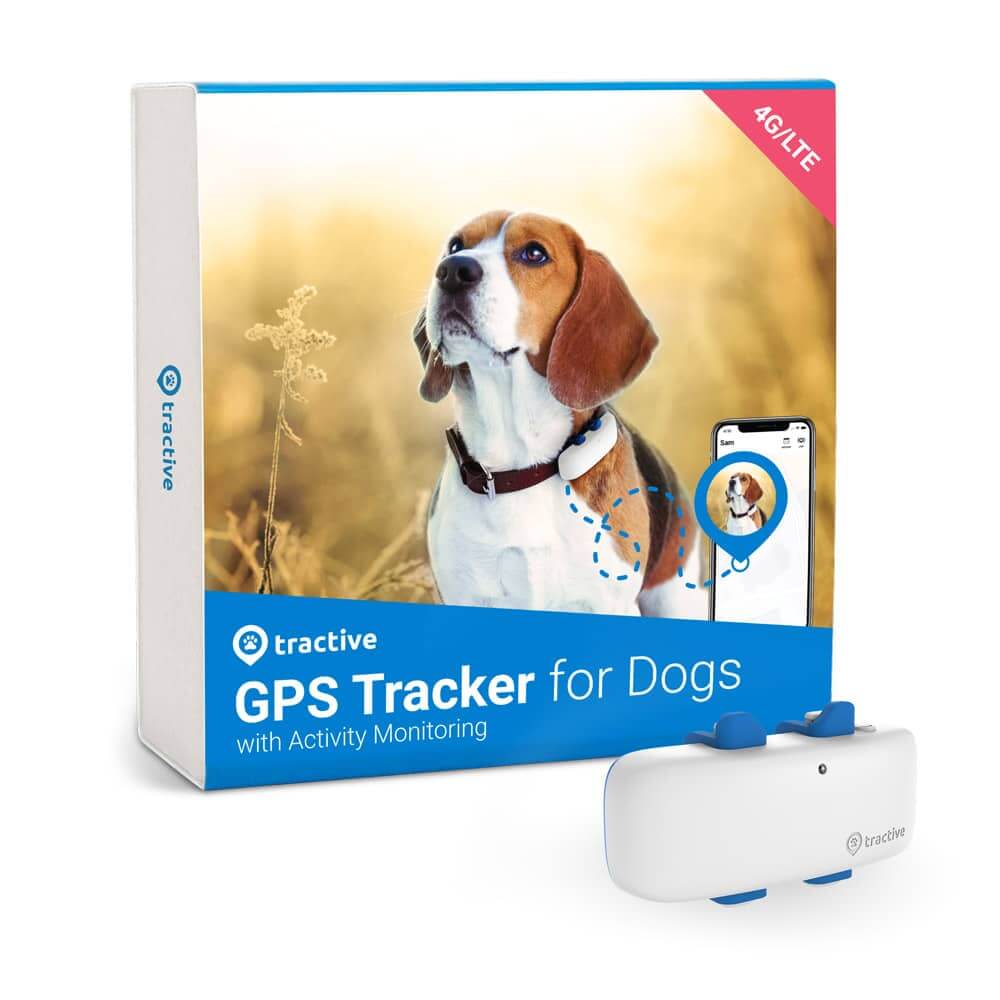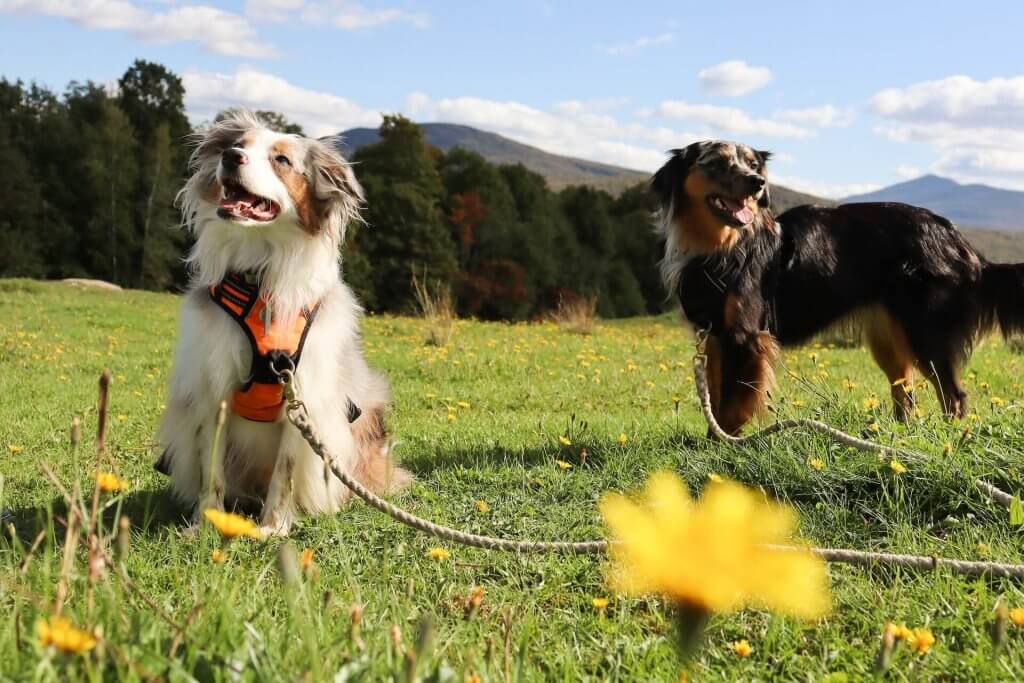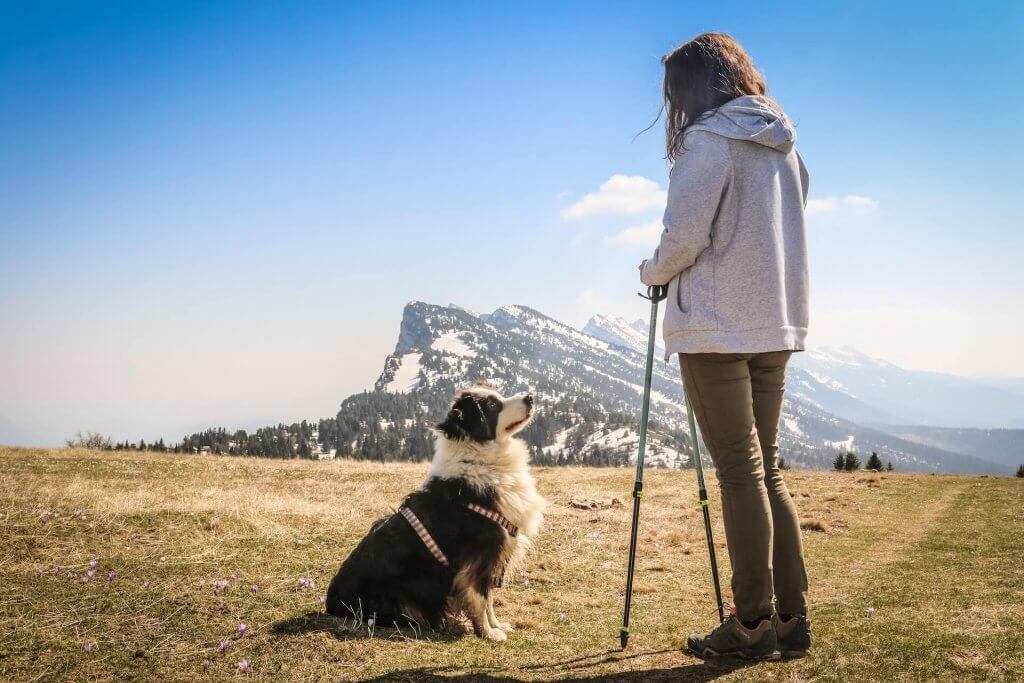How to Keep Your Dog Mentally Active
Give your dog a daily brain workout for optimum health.

You take your dog on daily walks to keep them healthy. But did you know that mental fitness is just as important as physical fitness for your pup’s overall well-being? Read our tips for keeping your dog mentally fit in this post.

Find out how your dog spends their time.
Read more- Why is mental stimulation for dogs so important?
- Ideas for keeping your dog mentally fit
- Obedience training
- Make them work for food: food puzzles
- Rotate your dog’s toys and activities to keep them engaged
- Play hide and seek
- Playdates and dog parks
- Teach your dog new tricks
- Set up an obstacle course in your backyard
- Agility courses
- Incorporate regular walks and outdoor adventures to stimulate your dog’s senses
- Mental stimulation creates a bond between you and your dog

Stay on top of your dog’s wellness
See how they’re doing at a glance with Wellness Score. Set goals. Compare with dogs like yours. Monitor sleep. Detect issues and keep them healthy.
Why is mental stimulation for dogs so important?
Dogs are smart, active, energetic animals. Over many centuries, dogs’ instinctive abilities were honed into dog breeds specializing in herding, guarding, retrieving, tracking, and other tasks requiring mental sharpness and focus. If you’ve ever seen a working dog at work, they seem engaged and purposeful. Getting a pat on the head from their human is the only acknowledgement they need.
But in modern times, most dogs don’t get to put their instincts or breed traits to use. If your retriever stays home alone most of the day, they are probably sleeping or looking out the window – they are definitely not retrieving anything. This lack of mental stimulation or purpose is when dogs become bored. Boredom can lead to bad behavior or even destructive tendencies.
It’s highly unlikely that you will start hunting or sheep herding every day just to keep your dog mentally stimulated, but there are many simple activities you can do at home to build your dog’s mental fitness. Most dogs require only 15 minutes of challenging activity per day to stay mentally fit.
There are two huge benefits to adding mental stimulation to your dog’s daily routine:
- First, you’ll build a stronger bond between you and your pooch.
- Secondly, your dog will be more engaged and less bored.
Ideas for keeping your dog mentally fit
Obedience training
Basic dog obedience training is the foundation of every activity you undertake with your pup and is one of the most basic ways to engage your dog’s brain. Obedience training requires extreme focus from your dog as they listen to your commands and control their impulses. This is hard work for your pup! When they perform the requested behavior correctly, offer lots of verbal praise and maybe a dog treat as positive reinforcement. If your dog does not perform the behavior, don’t punish them – just ignore them.
A few minutes per day of reviewing basic commands like Come, Sit, and Stay will keep your dog’s brain stimulated. If you have yet to train your dog to perform these basic commands, it’s never too late to start. You can sign up for dog obedience classes, hire a dog trainer, or use video tools online. Most of the mentally stimulating activities listed below will be easier to manage if your dog is well trained. As a bonus, your dog will develop a strong bond of loyalty toward you, their favorite human.
Train Your Dog: The Importance of Consistency In Dog Training
Make them work for food: food puzzles
Dog puzzle toys are a great way to engage the brain of a dog that is home alone during the day. The shelves of your local pet store are lined with treat dispensers, puzzle feeders, puzzle toys, and interactive devices. If your dog is hungry, they will be super-motivated to extract their food from the device. Puzzle toys make mealtime a problem-solving experience that lasts longer than simply placing a bowl of kibble in front of your pup.
Consider using a peanut butter-stuffed kong toy or making your own puzzle feeder by cutting a few holes in a plastic bottle and placing some dry kibble inside. A cardboard egg carton is another DIY puzzle feeder option. The kibble you place in the puzzle feeder should be part of your dog’s daily diet, not extra food. Your dog will learn that the food falls out of the holes if they roll the bottle around or flip the egg carton upside down.
Another option is a dog version of the “shell game.” Place three plastic cups or bowls upside down, and tuck a treat under one of them as your dog watches. Shuffle the cups around and watch your dog do some nose work to sniff out the treat. Offer verbal praise along with the treat when your pup finds it.
What Foods Can Dogs Not Eat? 15 Foods Poisonous to Dogs
Rotate your dog’s toys and activities to keep them engaged
No one likes doing the exact same thing every day, including your dog. If you have a basket of dog toys in the den, remove half and put them on a high shelf. Once a week, pull out the hidden toys and put away the toys you used all week. This applies to the puzzle feeders you use to deliver food and treats, too. By swapping the dog’s toys out, your pup will have to re-learn how to solve the puzzles that were hidden away for a week. This creates extra mental stimulation for your pup.
Pet parents can play along with their dog by engaging in interactive and mentally stimulating play sessions. Use the dog’s toys to play “find the toy, tug of war, or create a treasure hunt. Try a different game each day to mix it up.
Play hide and seek
An old-fashioned game of hide and seek is perfect for keeping your dog mentally stimulated on a cold or rainy day. Have a friend or family member sit with your dog while you go and hide. (This is where obedience training is super helpful, because your dog needs to Stay with your friend.)
Choose a hiding place where your dog can actually find you, like in the bathtub behind the shower curtain. Have your friend give the command to “Go find her/him!” Give your pup lots of verbal praise when they find you, along with a good ear scratch!

Playdates and dog parks
Dogs are pack animals, and while you are the leader of their pack, they enjoy hanging out with other dogs, too.
Playdates and dog park visits give your pup a chance to interact with other dogs and practice their social skills, which is a form of mental stimulation. And you can be certain that your dog will get plenty of physical exercise at the dog park, too.
Running off-leash at the dog park is a huge thrill for most dogs. Be sure to keep a close eye on your pup and watch for aggressiveness, bullying, anxiety, or other negative behaviors from your dog or their playmates.
Make sure your dog is trained to Come when called before you go to the dog park, a basic behavior known as Recall. Having this behavior down pat will enable you to remove your dog from any unsafe situations right away.
Dog Park Etiquette: How To Follow Dog Park Rules And Make Your Visit Enjoyable
Teach your dog new tricks
Can an old dog learn new tricks? Yes, any dog can learn something new and the process is mentally stimulating for your dog. Learning new tricks, or behaviors as they are called by trainers, is an extremely challenging brain workout for your dog. By using positive reinforcement, your dog will gain confidence and enjoy some mental stimulation.
There are hundreds of behaviors to choose from depending on how much space and time you have, as well as the length of your dog’s attention span and your own patience level. Start with easy behaviors and build toward more complex, multi-step behaviors. Rolling over, retrieving objects, or putting away toys are a few ideas to get your started toward building your dog’s repertoire.
Don’t be discouraged if your dog doesn’t learn the behavior on day one. Just keep practicing, or go back to the basics if the behavior is too complex. Try to end each session on a positive note by asking your dog to perform a known behavior, like Sit. Every training session provides mental stimulation that is important for your dog’s mental health.
Set up an obstacle course in your backyard
You don’t need much equipment to create a simple obstacle course for your dog. The purpose of an obstacle course should be to encourage your dog to problem-solve and move toward a goal, then reward them with praise or a treat – kind of like a dog treasure hunt.
An example of an indoor obstacle course is to drape blankets over a few chairs to create a tunnel. Encourage your dog to find their way through to the other side, where you await them. Place a box or big pillow in the center of the tunnel so your pup has to navigate around or over it. Your pup has to figure out how to get to you, which requires focus and is mentally stimulating.
Outdoors, employ the same techniques. Use benches, chairs, tomato stakes, and other items to create a winding path across your backyard. Gradually add more challenging experiences to the obstacle course as your dog masters the basics. Insert a box that your dog has to climb over, or lean a broom along the path so your dog has to go under it. You are only limited by your imagination and the random stuff in your garage.
Agility courses
Dog agility training is an intense physical and mental workout for your dog. In this setting, your pup has to navigate complex situations, perform athletic leaps, squeeze through tight spaces, or problem-solve. Some dog parks have agility courses, or you can create your own in your backyard. If your pup becomes an agility course pro, you can enter them in official competitions.
Before trying dog agility training, your dog should be able to master a DIY obstacle course at home as well as basic obedience commands. Senior dogs may not be able to handle the running and jumping required to complete an agility course. For senior dogs, try creating an at-home version of an agility course that requires more problem solving that physical exercise.
Check out other dog sports, including work games such as herding, tracking and other sports to stimulate your dog’s brain.

Incorporate regular walks and outdoor adventures to stimulate your dog’s senses
The great outdoors is a perfect way for your dog to experience new mentally-stimulating sights, sounds, and smells. As you walk along a wooded path or visit a new park, your dog’s mind is on high alert, wondering “Where are we going?” or “Why is that squirrel taunting me?”
Hiking With Dogs: Essential Tips For a Safe Adventure Together
Before hitting the trail, consider your dog’s physical fitness and stamina. Can they handle a long hike? If not, a neighborhood stroll can be fun, too. Just try to mix up your route to keep it interesting. Also, make sure your dog can follow basic commands and has good social skills, especially towards children.
Walking outdoors can be good for you, too. Enjoy not only the exercise, but the calming effects of nature. Who better to experience it with than your loyal furry friend?
Mental stimulation creates a bond between you and your dog
Most of the activities that mentally stimulate your dog have one thing in common – they require you and your pup to work together and spend time focusing on each other. Dogs love the one-on-one attention from you, their pet parent. As you gradually include brain games in your dog’s daily routine, you’ll see your dog learn new skills, gain confidence, and become even more loyal to you.




